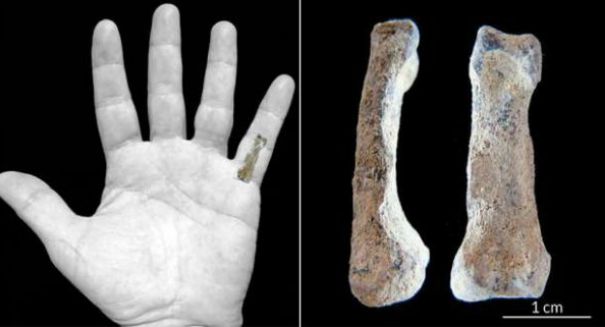
Scientists were shocked after stumbling upon the oldest human hand ever discovered.
A stunning find in the legendary Olduvai Gorge in Tanzania of a 1.85 million year old finger bone could completely rewrite scientists’ understanding of human evolution.
Olduvai, one of the most important paleoanthropological sites on the planet that has led to many key developments in the understanding of early human evolution, has yielded yet another amazing find: a finger bone that dates back to the time when humans were figuring out how to use tools and hunt, according to a Daily Mail report.
It’s not a big piece of bone, just a few centimeters long, but this tiny fragment can reveal a huge amount about mankind’s behavior and body type during the time, as the hand is a very distinguishing part of a human. It allows scientists a window to take a peak at what stage of evolution humans were at at the time, as hands evolved a great deal to allow for different grips, and eventually to the point where man was able to use tools.
Scientists estimate that the individual would have been about 5 feet 9 inches, much larger and more human-like than the Homo habilis that lived in the area, which would have only been about 3 feet tall. It indicates that the modern hand developed much earlier than previously thought, about 400,000 years earlier to be exact.
A modern hand includes a longer thumb to enable better grips, as well as a straightening of the phalanges — the three bones in each finger. Curved phalanges were better for tree-climbers. Many members of the Homo genus started walking as long ago as six million years, but because their phalanges remained curve, it indicated they had not fully left the trees.